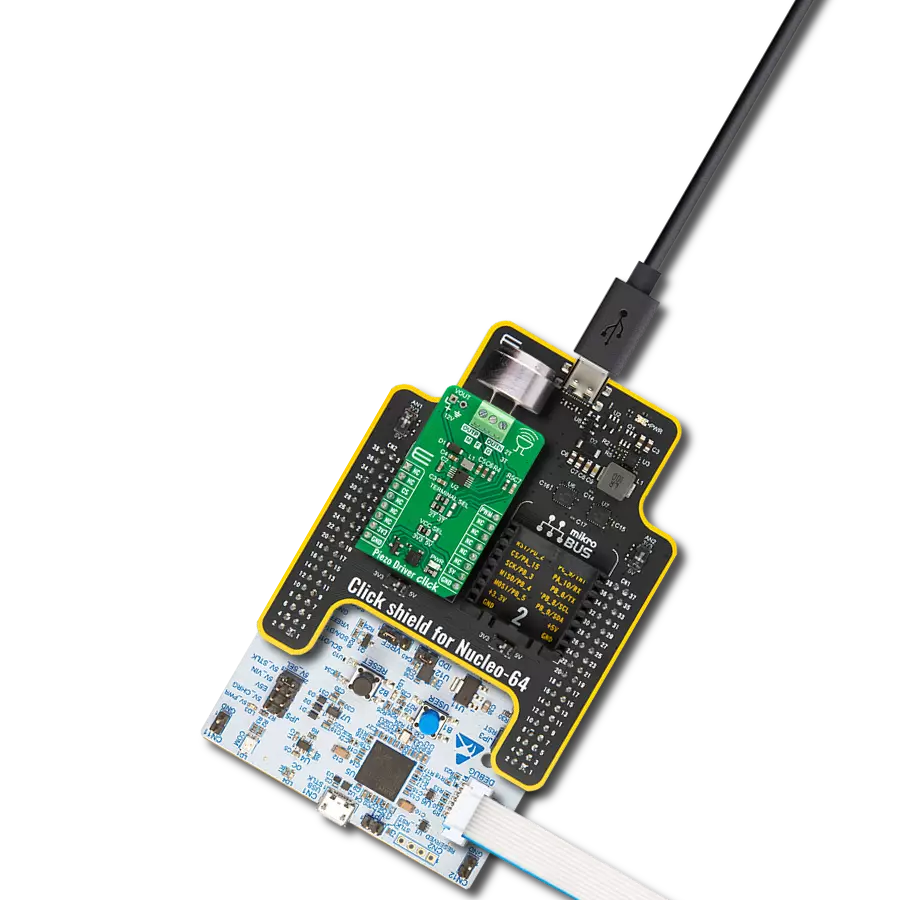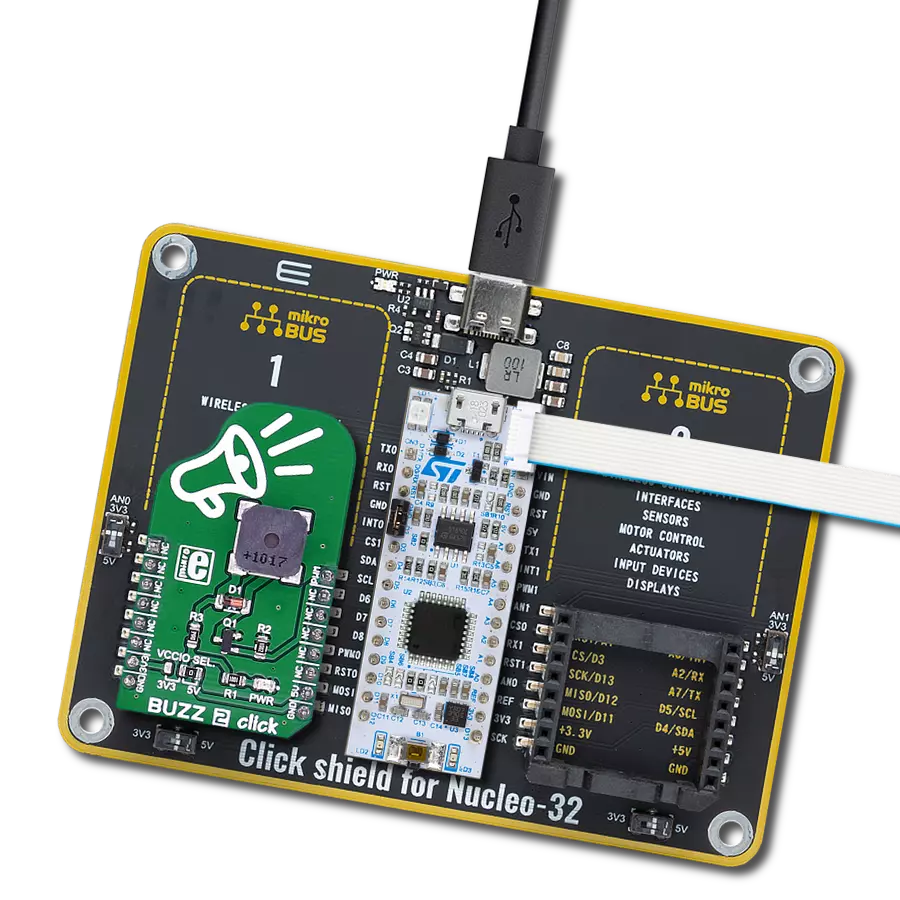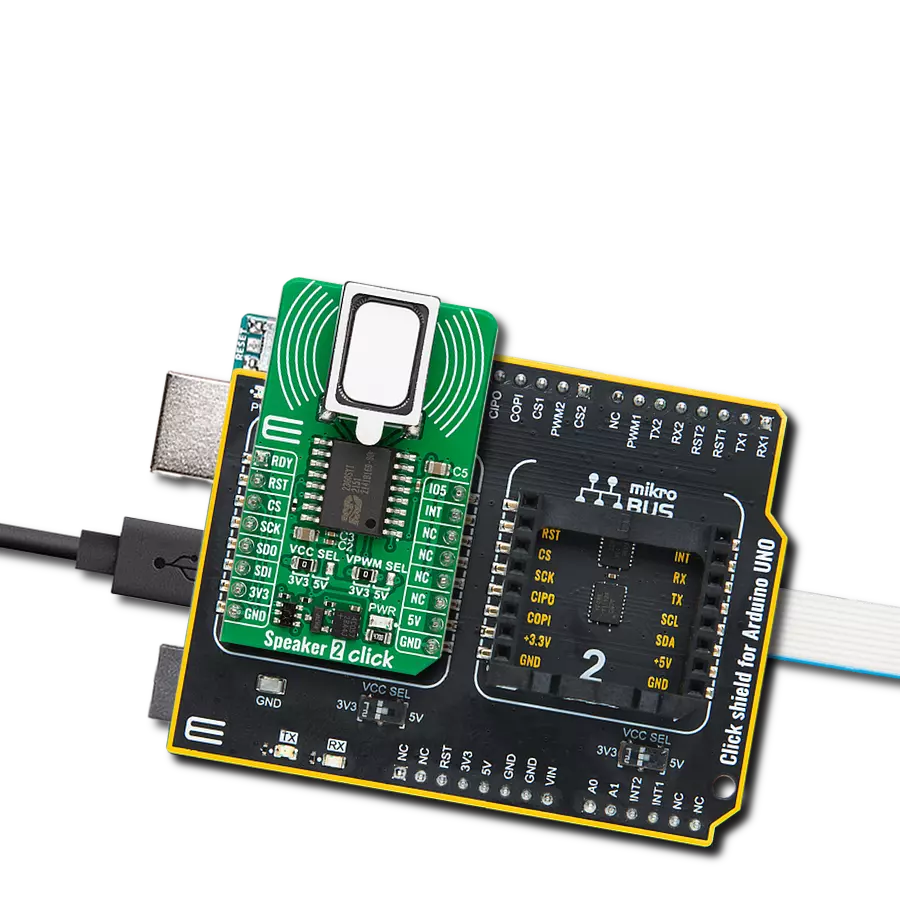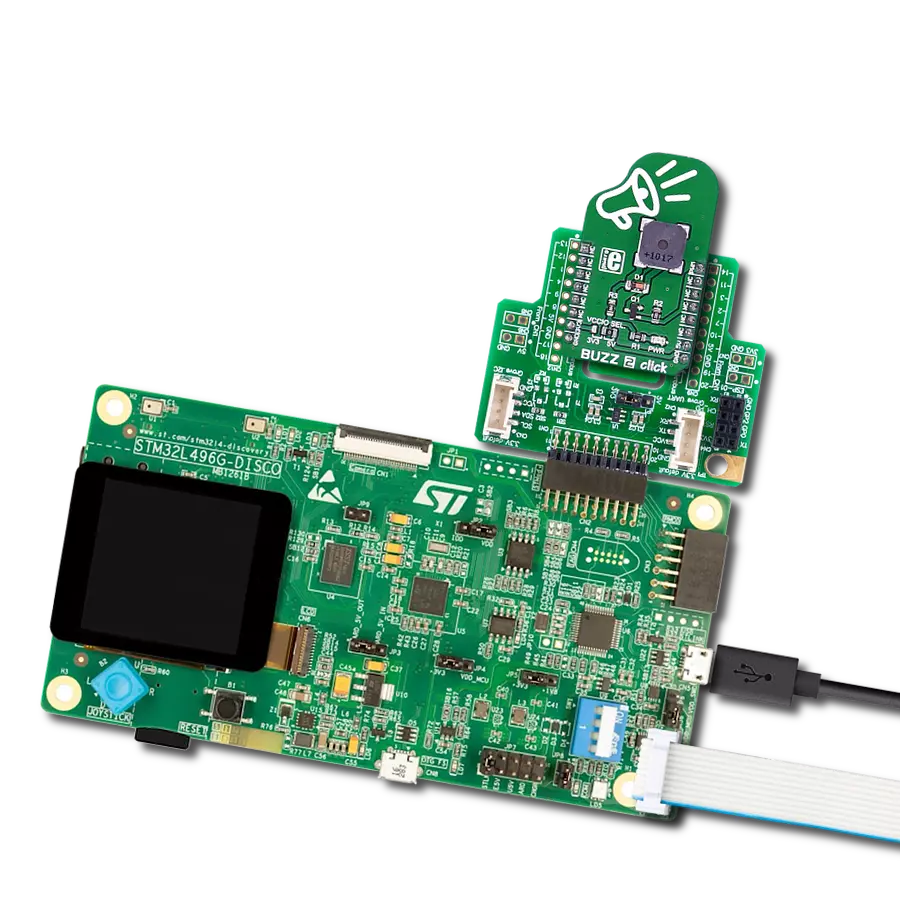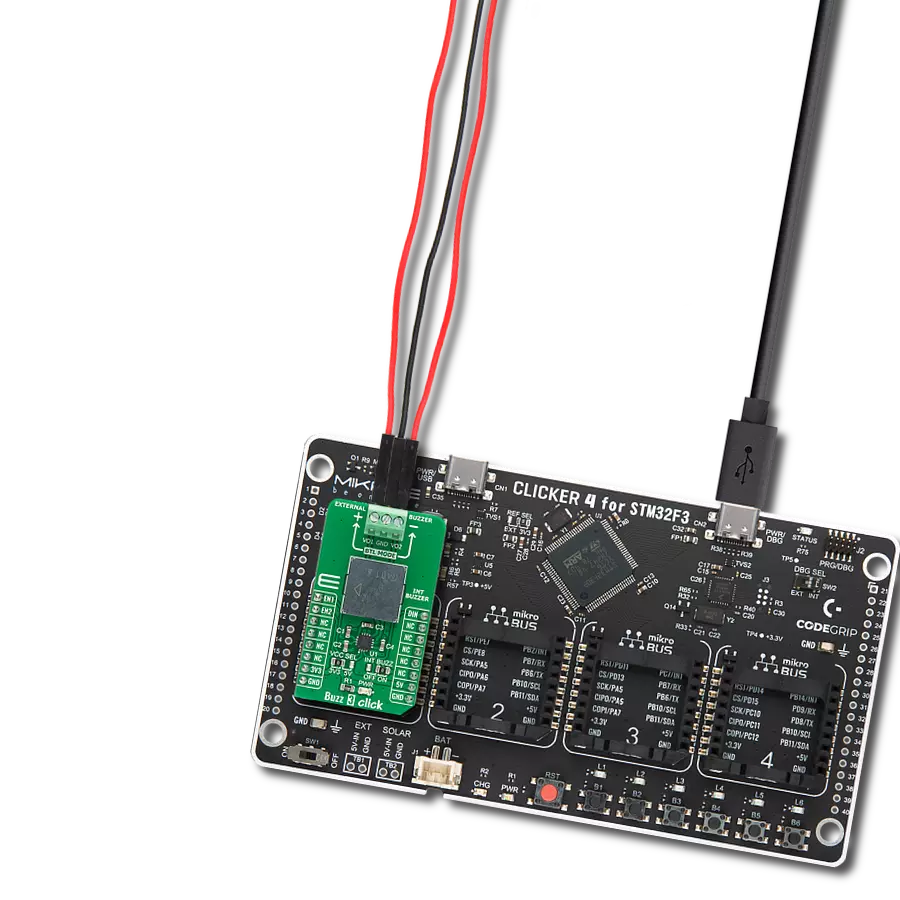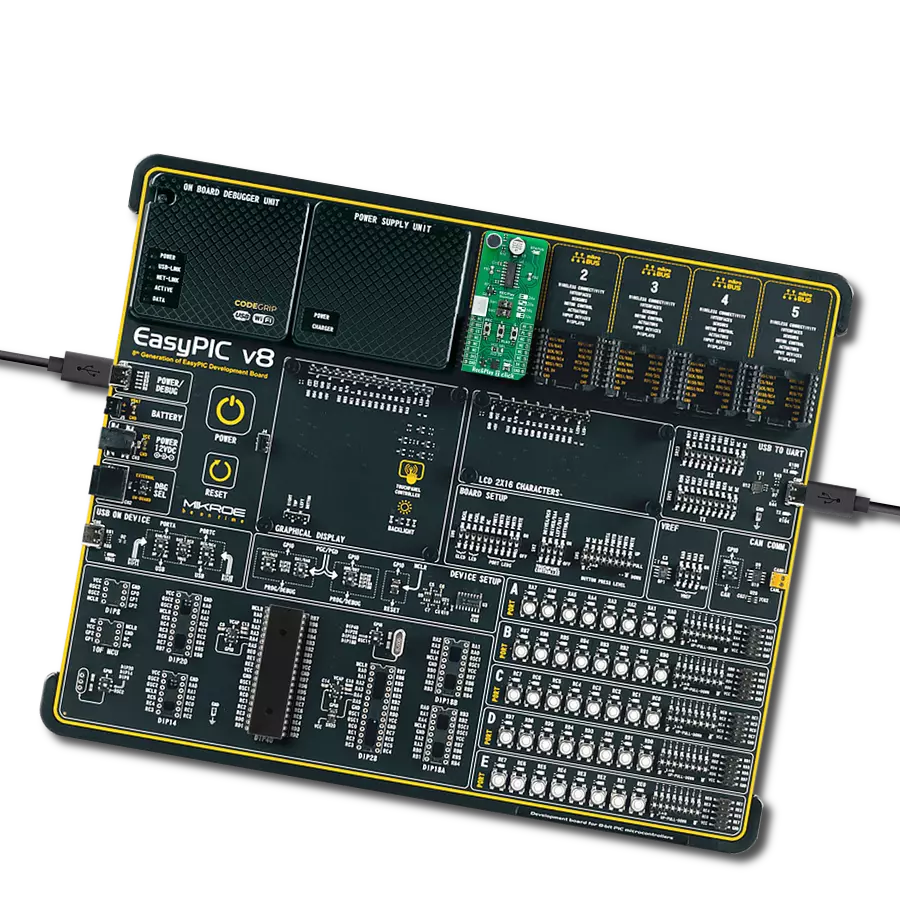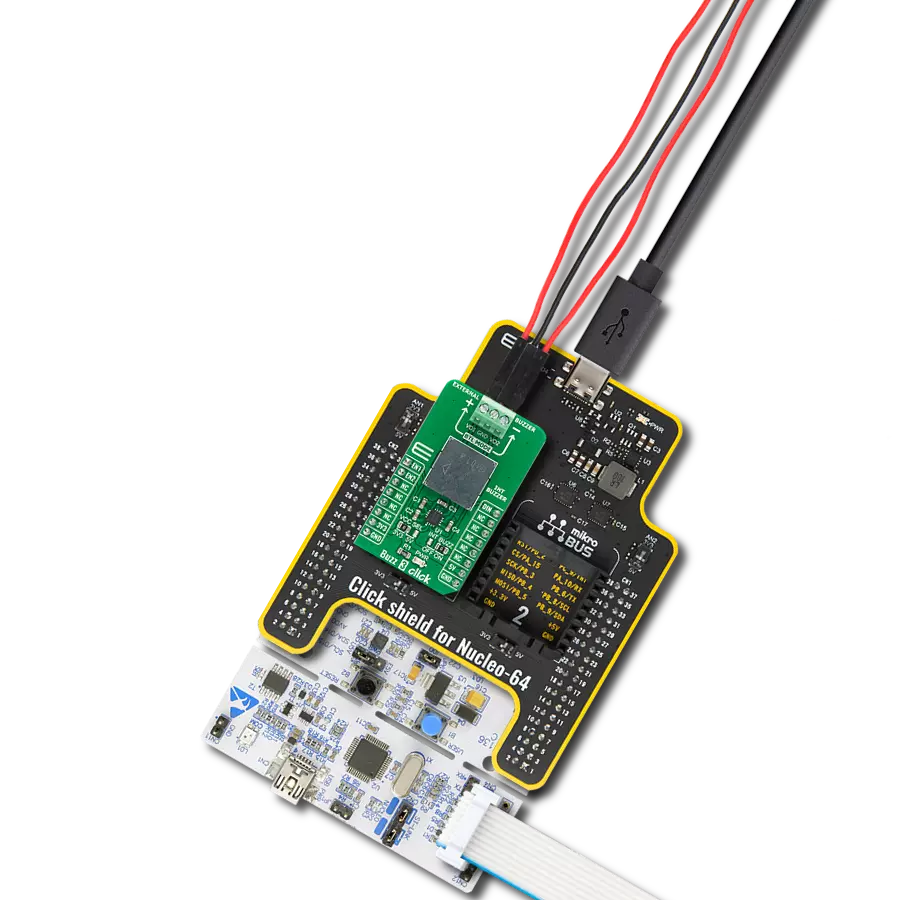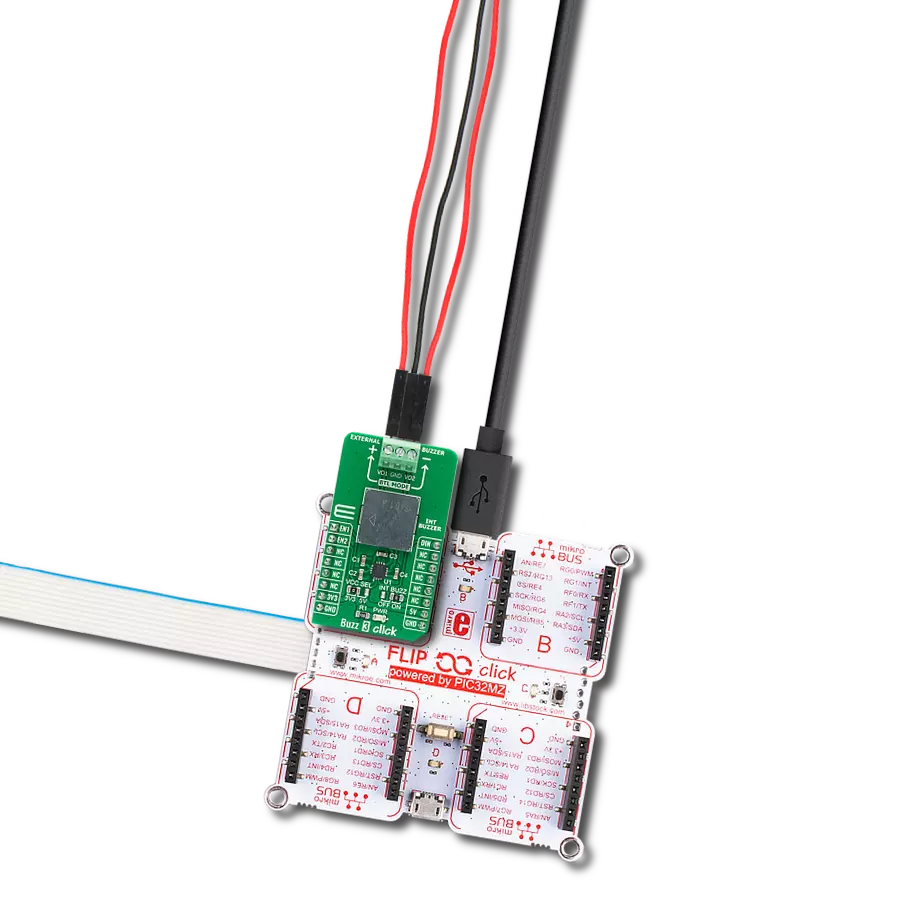探索我们的蜂鸣器解决方案如何彻底改变您的日常生活,从增强家庭安全到简化工业流程。
A
A
硬件概览
它是如何工作的?
BUZZ 2 Click基于CMT-8540S-SMT,这是来自CUI Devices的磁性蜂鸣器换能器。蜂鸣器的共振频率为4kHz。该点击板设计为可以使用3.3V或5V电源运行。mikroBUS™线上的PWM引脚控制CMT-8540S-SMT磁性蜂鸣器。您可
以使用我们编译器支持的Sound库来创建不同的声音模式,或利用微控制器内部的PWM模块来为蜂鸣器创建信号。信号频率决定声音的音调,而占空比决定振幅(声音大小)。这个Click board™可以通过VCCIO SEL跳线选择使
用3.3V或5V逻辑电压级别,这样,3.3V和5V能力的MCU都可以正确使用通信线。此外,这个Click board™还配备了一个包含易于使用的功能和示例代码的库,可以作为进一步开发的参考。
功能概述
开发板
Arduino UNO 是围绕 ATmega328P 芯片构建的多功能微控制器板。它为各种项目提供了广泛的连接选项,具有 14 个数字输入/输出引脚,其中六个支持 PWM 输出,以及六个模拟输入。其核心组件包括一个 16MHz 的陶瓷谐振器、一个 USB 连接器、一个电
源插孔、一个 ICSP 头和一个复位按钮,提供了为板 子供电和编程所需的一切。UNO 可以通过 USB 连接到计算机,也可以通过 AC-to-DC 适配器或电池供电。作为第一个 USB Arduino 板,它成为 Arduino 平台的基准,"Uno" 符号化其作为系列首款产品的地
位。这个名称选择,意为意大利语中的 "一",是为了 纪念 Arduino Software(IDE)1.0 的推出。最初与 Arduino Software(IDE)版本1.0 同时推出,Uno 自此成为后续 Arduino 发布的基础模型,体现了该平台的演进。
微控制器概述
MCU卡片 / MCU
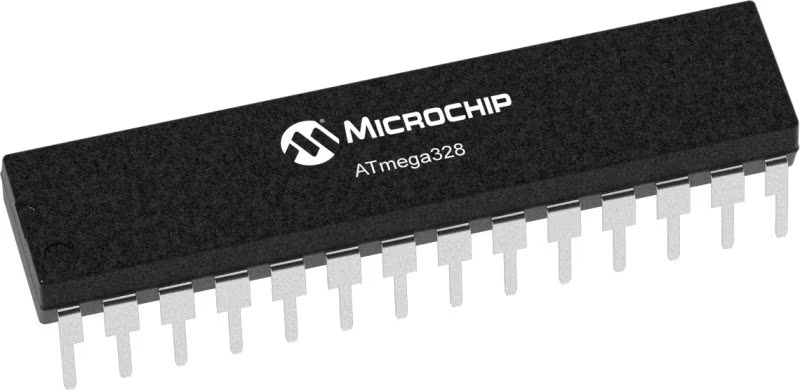
建筑
AVR
MCU 内存 (KB)
32
硅供应商
Microchip
引脚数
32
RAM (字节)
2048
你完善了我!
配件
Click Shield for Arduino UNO 具有两个专有的 mikroBUS™ 插座,使所有 Click board™ 设备能够轻松与 Arduino UNO 板进行接口连接。Arduino UNO 是一款基于 ATmega328P 的微控制器开发板,为用户提供了一种经济实惠且灵活的方式来测试新概念并构建基于 ATmega328P 微控制器的原型系统,结合了性能、功耗和功能的多种配置选择。Arduino UNO 具有 14 个数字输入/输出引脚(其中 6 个可用作 PWM 输出)、6 个模拟输入、16 MHz 陶瓷谐振器(CSTCE16M0V53-R0)、USB 接口、电源插座、ICSP 头和复位按钮。大多数 ATmega328P 微控制器的引脚都连接到开发板左右两侧的 IO 引脚,然后再连接到两个 mikroBUS™ 插座。这款 Click Shield 还配备了多个开关,可执行各种功能,例如选择 mikroBUS™ 插座上模拟信号的逻辑电平,以及选择 mikroBUS™ 插座本身的逻辑电压电平。此外,用户还可以通过现有的双向电平转换电压转换器使用任何 Click board™,无论 Click board™ 运行在 3.3V 还是 5V 逻辑电压电平。一旦将 Arduino UNO 板与 Click Shield for Arduino UNO 连接,用户即可访问数百种 Click board™,并兼容 3.3V 或 5V 逻辑电压电平的设备。
使用的MCU引脚
mikroBUS™映射器
“仔细看看!”
Click board™ 原理图

一步一步来
项目组装
软件支持
库描述
这个库包含了BUZZ 2 Click驱动的API。
关键功能:
buzz2_set_duty_cycle- BUZZ 2设置PWM占空比buzz2_play_sound- 播放声音功能buzz2_pwm_start- BUZZ 2启动PWM模块
开源
代码示例
完整的应用程序代码和一个现成的项目可以通过NECTO Studio包管理器直接安装到NECTO Studio。 应用程序代码也可以在MIKROE的GitHub账户中找到。
/*!
* @file main.c
* @brief Buzz2 Click example
*
* # Description
* This example demonstrates the use of Buzz 2 Click boards.
*
* The demo application is composed of two sections :
*
* ## Application Init
* Initializes the driver and logger.
*
* ## Application Task
* Plays the Imperial March melody. Also logs an appropriate message on the USB UART.
*
* @note
* The minimal PWM Clock frequency required for this example is the frequency of tone C6 - 1047 Hz.
* So, in order to run this example and play all tones correctly, the user will need to decrease
* the MCU's main clock frequency in MCU Settings for the certain architectures
* in order to get the required PWM clock frequency.
*
* @author Jelena Milosavljevic
*
*/
#include "board.h"
#include "log.h"
#include "buzz2.h"
#define W 4*Q // Whole 4/4 - 4 Beats
#define H 2*Q // Half 2/4 - 2 Beats
#define Q 250 // Quarter 1/4 - 1 Beat
#define E Q/2 // Eighth 1/8 - 1/2 Beat
#define S Q/4 // Sixteenth 1/16 - 1/4 Beat
#define VOLUME 100 // goes up to 1000
static buzz2_t buzz2;
static log_t logger;
static void imperial_march( )
{
buzz2_play_sound(&buzz2, BUZZ2_NOTE_A6, VOLUME, Q );
Delay_ms ( 1 + Q );
buzz2_play_sound(&buzz2, BUZZ2_NOTE_A6, VOLUME, Q );
Delay_ms ( 1 + Q );
buzz2_play_sound(&buzz2, BUZZ2_NOTE_A6, VOLUME, Q );
Delay_ms ( 1 + Q );
buzz2_play_sound(&buzz2, BUZZ2_NOTE_F6, VOLUME, E + S );
Delay_ms ( 1 + E + S );
buzz2_play_sound(&buzz2, BUZZ2_NOTE_C7, VOLUME, S );
Delay_ms ( 1 + S );
buzz2_play_sound(&buzz2, BUZZ2_NOTE_A6, VOLUME, Q );
Delay_ms ( 1 + Q );
buzz2_play_sound(&buzz2, BUZZ2_NOTE_F6, VOLUME, E + S );
Delay_ms ( 1 + E + S );
buzz2_play_sound(&buzz2, BUZZ2_NOTE_C7, VOLUME, S );
Delay_ms ( 1 + S );
buzz2_play_sound(&buzz2, BUZZ2_NOTE_A6, VOLUME, H );
Delay_ms ( 1 + H );
buzz2_play_sound(&buzz2, BUZZ2_NOTE_E7, VOLUME, Q );
Delay_ms ( 1 + Q );
buzz2_play_sound(&buzz2, BUZZ2_NOTE_E7, VOLUME, Q );
Delay_ms ( 1 + Q );
buzz2_play_sound(&buzz2, BUZZ2_NOTE_E7, VOLUME, Q );
Delay_ms ( 1 + Q );
buzz2_play_sound(&buzz2, BUZZ2_NOTE_F7, VOLUME, E + S );
Delay_ms ( 1 + E + S );
buzz2_play_sound(&buzz2, BUZZ2_NOTE_C7, VOLUME, S );
Delay_ms ( 1 + S );
buzz2_play_sound(&buzz2, BUZZ2_NOTE_Ab6, VOLUME, Q );
Delay_ms ( 1 + Q );
buzz2_play_sound(&buzz2, BUZZ2_NOTE_F6, VOLUME, E + S );
Delay_ms ( 1 + E + S );
buzz2_play_sound(&buzz2, BUZZ2_NOTE_C7, VOLUME, S );
Delay_ms ( 1 + S );
buzz2_play_sound(&buzz2, BUZZ2_NOTE_A6, VOLUME, H );
Delay_ms ( 1 + H );
buzz2_play_sound(&buzz2, BUZZ2_NOTE_A7, VOLUME, Q );
Delay_ms ( 1 + Q );
buzz2_play_sound(&buzz2, BUZZ2_NOTE_A6, VOLUME, E + S );
Delay_ms ( 1 + E + S );
buzz2_play_sound(&buzz2, BUZZ2_NOTE_A6, VOLUME, S );
Delay_ms ( 1 + S );
buzz2_play_sound(&buzz2, BUZZ2_NOTE_A7, VOLUME, Q );
Delay_ms ( 1 + Q );
buzz2_play_sound(&buzz2, BUZZ2_NOTE_Ab7, VOLUME, E + S );
Delay_ms ( 1 + E + S );
buzz2_play_sound(&buzz2, BUZZ2_NOTE_G7, VOLUME, S );
Delay_ms ( 1 + S );
buzz2_play_sound(&buzz2, BUZZ2_NOTE_Gb7, VOLUME, S );
Delay_ms ( 1 + S );
buzz2_play_sound(&buzz2, BUZZ2_NOTE_E7, VOLUME, Q );
Delay_ms ( 1 + Q );
buzz2_play_sound(&buzz2, BUZZ2_NOTE_F7, VOLUME, E );
Delay_ms ( 1 + E );
Delay_ms ( 1 + E );
buzz2_play_sound(&buzz2, BUZZ2_NOTE_Bb6, VOLUME, E );
Delay_ms ( 1 + E );
buzz2_play_sound(&buzz2, BUZZ2_NOTE_Eb7, VOLUME, Q );
Delay_ms ( 1 + Q );
buzz2_play_sound(&buzz2, BUZZ2_NOTE_D7, VOLUME, E + S );
Delay_ms ( 1 + E + S );
buzz2_play_sound(&buzz2, BUZZ2_NOTE_Db7, VOLUME, S );
Delay_ms ( 1 + S );
buzz2_play_sound(&buzz2, BUZZ2_NOTE_C7, VOLUME, S );
Delay_ms ( 1 + S );
buzz2_play_sound(&buzz2, BUZZ2_NOTE_B6, VOLUME, S );
Delay_ms ( 1 + S );
buzz2_play_sound(&buzz2, BUZZ2_NOTE_C7, VOLUME, E );
Delay_ms ( 1 + E );
Delay_ms ( 1 + E );
buzz2_play_sound(&buzz2, BUZZ2_NOTE_F6, VOLUME, E );
Delay_ms ( 1 + E );
buzz2_play_sound(&buzz2, BUZZ2_NOTE_Ab6, VOLUME, Q );
Delay_ms ( 1 + Q );
buzz2_play_sound(&buzz2, BUZZ2_NOTE_F6, VOLUME, E + S );
Delay_ms ( 1 + E + S );
buzz2_play_sound(&buzz2, BUZZ2_NOTE_A6, VOLUME, S );
Delay_ms ( 1 + S );
buzz2_play_sound(&buzz2, BUZZ2_NOTE_C7, VOLUME, Q );
Delay_ms ( 1 + Q );
buzz2_play_sound(&buzz2, BUZZ2_NOTE_A6, VOLUME, E + S );
Delay_ms ( 1 + E + S );
buzz2_play_sound(&buzz2, BUZZ2_NOTE_C7, VOLUME, S );
Delay_ms ( 1 + S );
buzz2_play_sound(&buzz2, BUZZ2_NOTE_E7, VOLUME, H );
Delay_ms ( 1 + H );
buzz2_play_sound(&buzz2, BUZZ2_NOTE_A7, VOLUME, Q );
Delay_ms ( 1 + Q );
buzz2_play_sound(&buzz2, BUZZ2_NOTE_A6, VOLUME, E + S );
Delay_ms ( 1 + E + S );
buzz2_play_sound(&buzz2, BUZZ2_NOTE_A6, VOLUME, S );
Delay_ms ( 1 + S );
buzz2_play_sound(&buzz2, BUZZ2_NOTE_A7, VOLUME, Q );
Delay_ms ( 1 + Q );
buzz2_play_sound(&buzz2, BUZZ2_NOTE_Ab7, VOLUME, E + S );
Delay_ms ( 1 + E + S );
buzz2_play_sound(&buzz2, BUZZ2_NOTE_G7, VOLUME, S );
Delay_ms ( 1 + S );
buzz2_play_sound(&buzz2, BUZZ2_NOTE_Gb7, VOLUME, S );
Delay_ms ( 1 + S );
buzz2_play_sound(&buzz2, BUZZ2_NOTE_E7, VOLUME, S );
Delay_ms ( 1 + S );
buzz2_play_sound(&buzz2, BUZZ2_NOTE_F7, VOLUME, E );
Delay_ms ( 1 + E );
Delay_ms ( 1 + E );
buzz2_play_sound(&buzz2, BUZZ2_NOTE_Bb6, VOLUME, E );
Delay_ms ( 1 + E );
buzz2_play_sound(&buzz2, BUZZ2_NOTE_Eb7, VOLUME, Q );
Delay_ms ( 1 + Q );
buzz2_play_sound(&buzz2, BUZZ2_NOTE_D7, VOLUME, E + S );
Delay_ms ( 1 + E + S );
buzz2_play_sound(&buzz2, BUZZ2_NOTE_Db7, VOLUME, S );
Delay_ms ( 1 + S );
buzz2_play_sound(&buzz2, BUZZ2_NOTE_C7, VOLUME, S );
Delay_ms ( 1 + S );
buzz2_play_sound(&buzz2, BUZZ2_NOTE_B6, VOLUME, S );
Delay_ms ( 1 + S );
buzz2_play_sound(&buzz2, BUZZ2_NOTE_C7, VOLUME, E );
Delay_ms ( 1 + E );
Delay_ms ( 1 + E );
buzz2_play_sound(&buzz2, BUZZ2_NOTE_F6, VOLUME, E );
Delay_ms ( 1 + E );
buzz2_play_sound(&buzz2, BUZZ2_NOTE_Ab6, VOLUME, Q );
Delay_ms ( 1 + Q );
buzz2_play_sound(&buzz2, BUZZ2_NOTE_F6, VOLUME, E + S );
Delay_ms ( 1 + E + S );
buzz2_play_sound(&buzz2, BUZZ2_NOTE_C7, VOLUME, S );
Delay_ms ( 1 + S );
buzz2_play_sound(&buzz2, BUZZ2_NOTE_A6, VOLUME, Q );
Delay_ms ( 1 + Q );
buzz2_play_sound(&buzz2, BUZZ2_NOTE_F6, VOLUME, E + S );
Delay_ms ( 1 + E + S );
buzz2_play_sound(&buzz2, BUZZ2_NOTE_C7, VOLUME, S );
Delay_ms ( 1 + S );
buzz2_play_sound(&buzz2, BUZZ2_NOTE_Ab6, VOLUME, H );
Delay_ms ( 1 + H );
}
void application_init ( void ) {
log_cfg_t log_cfg; /**< Logger config object. */
buzz2_cfg_t buzz2_cfg; /**< Click config object. */
/**
* Logger initialization.
* Default baud rate: 115200
* Default log level: LOG_LEVEL_DEBUG
* @note If USB_UART_RX and USB_UART_TX
* are defined as HAL_PIN_NC, you will
* need to define them manually for log to work.
* See @b LOG_MAP_USB_UART macro definition for detailed explanation.
*/
LOG_MAP_USB_UART( log_cfg );
log_init( &logger, &log_cfg );
log_info( &logger, " Application Init " );
// Click initialization.
buzz2_cfg_setup( &buzz2_cfg );
BUZZ2_MAP_MIKROBUS( buzz2_cfg, MIKROBUS_1 );
err_t init_flag = buzz2_init( &buzz2, &buzz2_cfg );
if ( init_flag == PWM_ERROR ) {
log_error( &logger, " Application Init Error. " );
log_info( &logger, " Please, run program again... " );
for ( ; ; );
}
buzz2_set_duty_cycle ( &buzz2, 0.0 );
buzz2_pwm_start( &buzz2 );
Delay_ms ( 100 );
log_info( &logger, " Application Task " );
}
void application_task ( void )
{
log_printf( &logger, "Playing the Imperial March melody ...\r\n" );
imperial_march( );
// 10 seconds delay
Delay_ms ( 1000 );
Delay_ms ( 1000 );
Delay_ms ( 1000 );
Delay_ms ( 1000 );
Delay_ms ( 1000 );
Delay_ms ( 1000 );
Delay_ms ( 1000 );
Delay_ms ( 1000 );
Delay_ms ( 1000 );
Delay_ms ( 1000 );
}
int main ( void )
{
/* Do not remove this line or clock might not be set correctly. */
#ifdef PREINIT_SUPPORTED
preinit();
#endif
application_init( );
for ( ; ; )
{
application_task( );
}
return 0;
}
// ------------------------------------------------------------------------ END
额外支持
资源
类别:扬声器




















